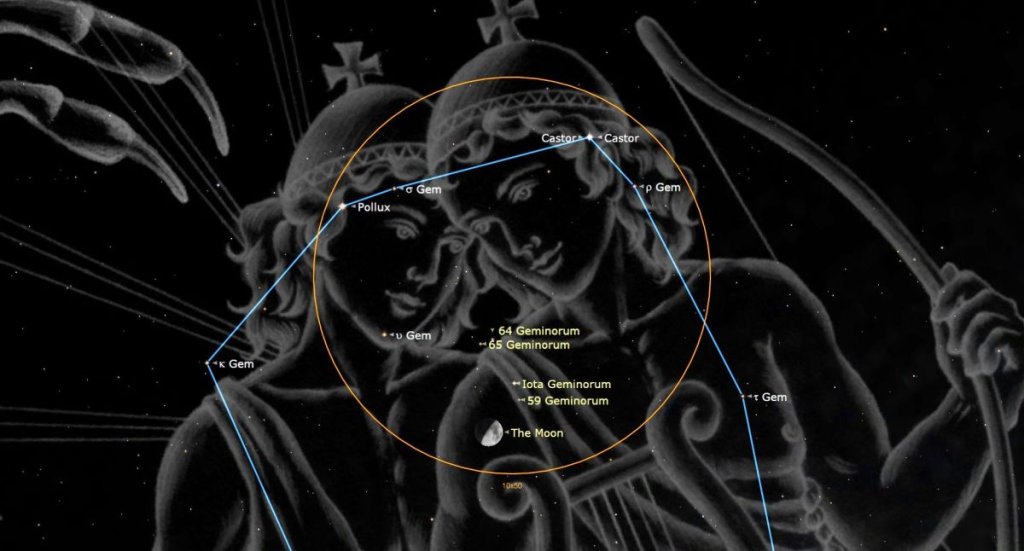
Spot the half-lit moon between the Gemini twins Castor and Pollux tonight (Image Credit: Space.com)
Tonight’s gibbous moon can help guide skywatchers to two iconic stars in the night sky.
On Wednesday (March 29), the moon will appear just below the two twins of the Gemini constellation, Castor and Pollux. While the moon will be visible throughout the afternoon, the setting sun will find the moon joining the twins in the night sky. From New York City, look high to the south just after sunset to find the moon alongside Pollux and its twin, Castor. The two stars will be just to the celestial northeast of the moon.
The scene can be easily viewed with the unaided eye; however, viewing the spectacle through binoculars will reveal many more stars in the Gemini constellation where the twins rub shoulders. Seasoned skywatchers can use the placement of the moon to locate and observe these fainter stars, while those still cultivating their skywatching knowledge can use our natural satellite to familiarize themselves with the Gemini constellation.
Related: Gemini constellation: Facts about the twins

Looking for a telescope to observe the moon near Gemini, or anything else in the sky? We recommend the Celestron Astro Fi 102 (opens in new tab) as the top pick in our best beginner’s telescope guide. Don’t forget a moon filter!
On March 29, the moon will be slightly more than half-illuminated as it passes near Castor and Pollux, having reached its half-lit first quarter phase the day before. The moon’s disk will grow increasingly lit until the next full moon on April 6, the Pink Moon.
For an added challenge tonight, try and locate Messier 35, the Shoe-Buckle Cluster, lying just to the south of Mars. The Red Planet can be found near this close open cluster of stars for the next several nights.

Gemini is one of the constellations of the Western zodiac and is one of the more familiar groupings of stars in Northern Hemisphere skies. The name Gemini comes from the Latin word for “twins,” although various cultures around the world specify different sets of siblings or pairs for the stars. In the Western zodiac, the constellation is named for Castor (or Alpha Geminorum) and Pollux (Beta Geminorum), twin half-brothers born to the Spartan queen Leda.

In other cultures, the twins take on different identities. In ancient Mesopotamia, for example, the twin stars were named after Lugal-irra and Meslamta-ea, twin gods who guarded the gates of the underworld. In Arabian astrology, meanwhile, the stars were said to represent twin peacocks.
If you’re hoping to view the Gemini constellation up close, our guides walking you through the best telescopes and best binoculars are a great place to start. And if you’re looking to try your hand at taking photos of the night sky, don’t miss our guide on how to photograph the moon, as well as our best cameras for astrophotography and best lenses for astrophotography.
Follow Brett on Twitter at @bretttingley (opens in new tab). Follow us @Spacedotcom (opens in new tab), or on Facebook (opens in new tab) and Instagram (opens in new tab).





